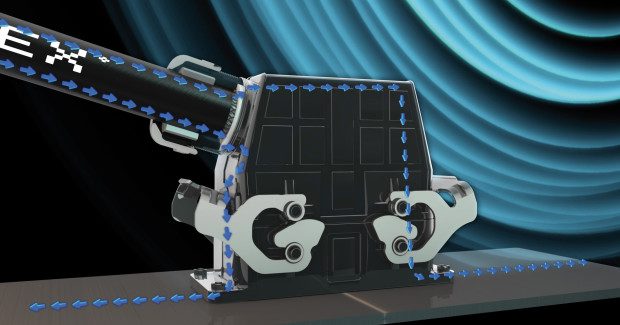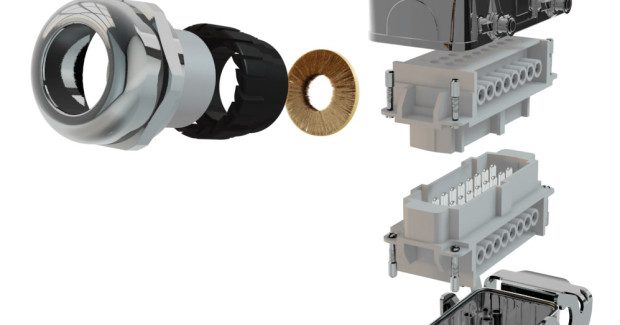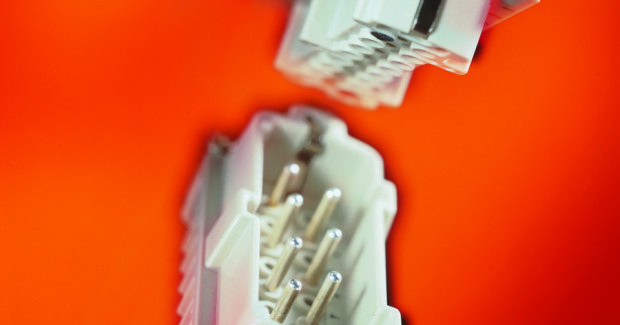Connectors: Low-Cost Insurance Against Downtime
With all of the mission-critical electrical connections in a modern plant, selecting the proper connector is more important than ever. These four factors will help you quickly narrow down an overwhelming field of choices.
Posted: January 10, 2015
The modern manufacturing plant today has thousands, or even many thousands, of electrical connections on machine tools, material handling systems, facility and building equipment as well as portable machinery. And it’s just a matter of time before some of those connections fail or wear out, bringing production machines to a dead stop. One way to minimize this downtime is to “connectorize” power and signal cables.
Multi-conductor cables can often be replaced in just minutes if they have connectors at both ends . . . whereas hard-wiring that same cable could take hours. Power and signal disruptions have many mechanical and electrical causes, everything from forklift accidents to over-current conditions. With all the mission-critical electrical connections in a modern plant, downtime from damaged electrical connections is a matter of “when” not “if.”
Think of connectors as a low-cost insurance policy against this downtime. While connectors do add a small premium to the initial cost of cabling, they will pay for themselves many times over if they eliminate even a few minutes of downtime on a busy production line. However, for all their downtime-prevention benefits, there is one problem with connectors: call it “connector confusion.”
There are currently dozens of connector varieties and thousands of individual connectors on the market, and even experienced engineers can find it difficult to select the right connector for the job at hand. Fortunately, connector confusion can be minimized by gathering information on four key technical factors. This information is readily available to any engineer who has already sized the application’s power or signal cables:
1. Number of contacts: It may seem obvious that the number of contacts in the connector should match or exceed the number in the cable. But one common mistake is to miscount by not considering the ground. Cable conductor counts typically include ground while connectors do not.
2. Wire gauge (awG): Cable wire gauge needs to be within the allowed range of the connector contacts. In general, screw contacts will accommodate a broader range of wire gauges than comparable crimped contacts.
3. Cable outside diameter (OD): This fundamental piece of dimensional information is too often overlooked during the specification process. Forgetting OD can have serious consequences. If the OD of the cable is too small relative to the housing, a poor seal will result, creating a performance issue. If the OD is too big, the cable may not fit in the housing easily or at all, creating a potentially costly installation issue.
4. Maximum voltage and current: Always double check to make sure the application’s voltage and current are within the rated capacity of the connector. For safety’s sake, this is the cardinal rule of specifying connectors.
Taken together, these factors determine whether the connector will function as a true extension of a given cable. It’s important to emphasize that all four factors must be taken into consideration. A connector, for instance, may meet the requirements on number of contacts, wire gauge and outside diameter but not satisfy the application’s current or voltage requirements.
These four key connector factors should be thought of as a starting point. They don’t capture the effects of difficult operating environments or unusual electrical requirements. But they will help you quickly narrow down the otherwise overwhelming field of connector products.
KEEPING ELECTROMAGNETIC INTERFERENCE AT BAY
When hardening electrical transmission systems against electromagnetic interference, engineers also should pay special attention to connectors and cable glands. These connection technologies, if improperly designed, can become the “weak link” in the shielding chain that ultimately determines the electromagnetic compatibility (EMC) of an electrical transmission system.
And unlike cables, connection technologies have not been covered by global design directives for EMC. So it has been up to individual manufacturers to make sure that their connectors and cable glands provide adequate shielding performance.
Connection technologies with the best EMC performance have been designed to minimize resistance between the cable shield and ground. In connectors, both goals can be achieved by creating a large-area contact between the cable shielding and a highly-conductive, sealed connector housing. This arrangement allows the connector housing to function as Faraday cage, blocking electromagnetic interference.
With cable glands, the maximum shielding performance can be achieved in designs that integrate the gland into the connector housing. These designs not only have beneficial shielding implications, they also eliminate a potential leak path between the connector housing and the strain relief, which increases the ability of the connector assembly to tolerate harsh operating conditions.
CONNECTIONS IN HARSH OPERATING CONDITIONS
Connectors often have to operate in corrosive, electrically noisy or mechanically challenging environments. A new connector housing has been introduced that is designed to thrive in these environments. Called EPIC® ULTRA, this new rectangular connector housing features nickel-plated zinc hoods and bases with stainless-steel hardware. Together, these corrosion-resistant materials allow the new housing to survive in applications that that would prove challenging for traditional painted aluminum housings.
This rectangular connector housing uses an integrated brush-style cable gland that provides a fast and easy method to terminate a cable shield with a 360 deg, low resistance contact area. Along with the nickel-plated housing, its SKINTOP® forms a conductive shell – or Faraday cage – around the electrical contacts to virtually eliminate electrical interference.
This unique mechanical design improves both sealing and strain relief. For one thing, the connector housing’s built-in cable gland not only improves sealing and strain relief but also speeds assembly and eliminates a possible leakage point. For another, the lip seal between the top and bottom housing components has been recessed so it is totally enclosed by the housing when mated and latched. This design feature protects it from mechanical damage and exposure to UV radiation when installed outdoors.
Lapp Holding NA, 29 Hanover Road, Florham Park, NJ 07932, 973-660-9700, Fax: 973-660-9330, www.lappusa.com.

















